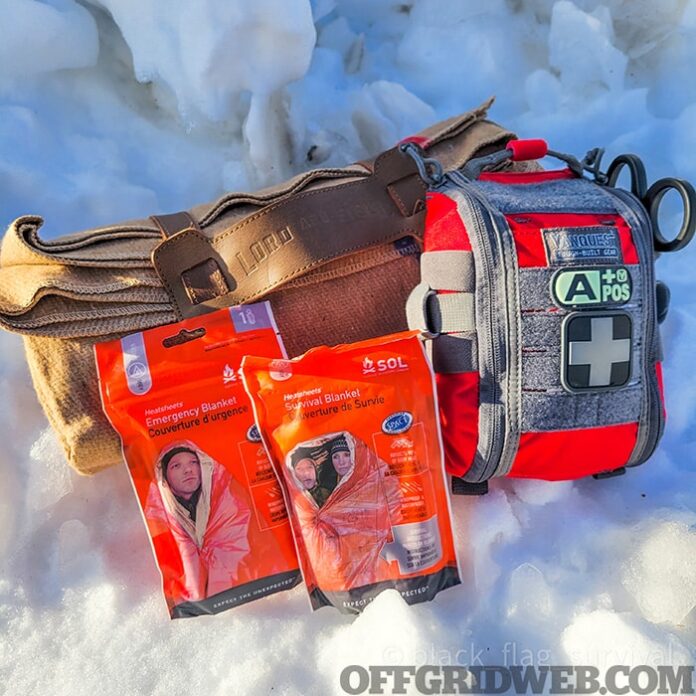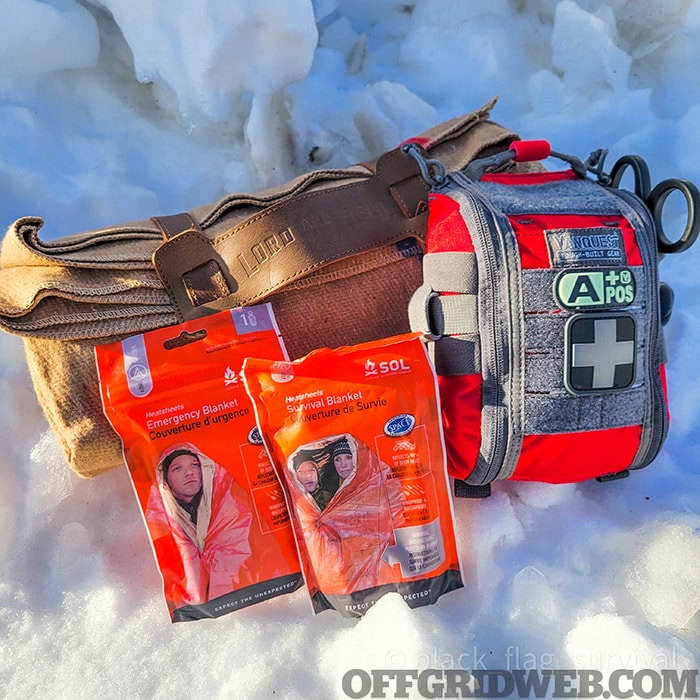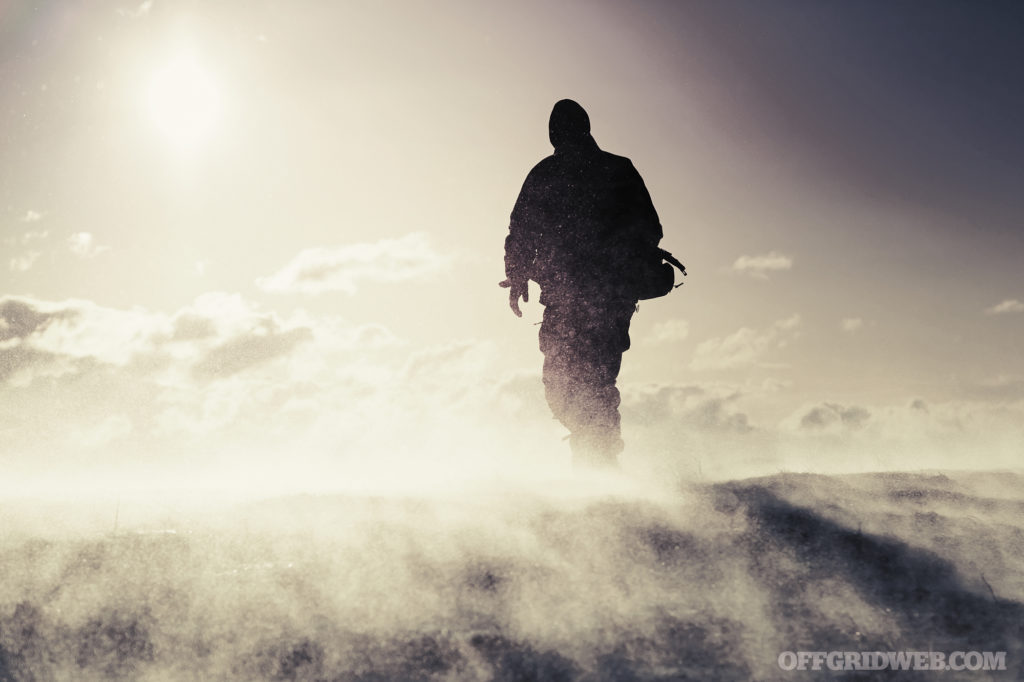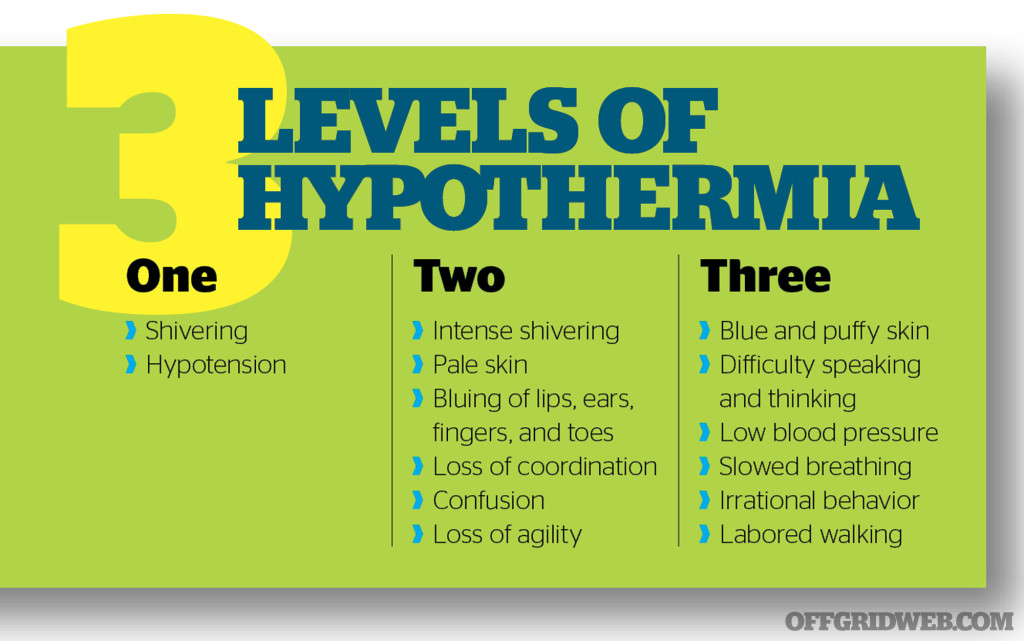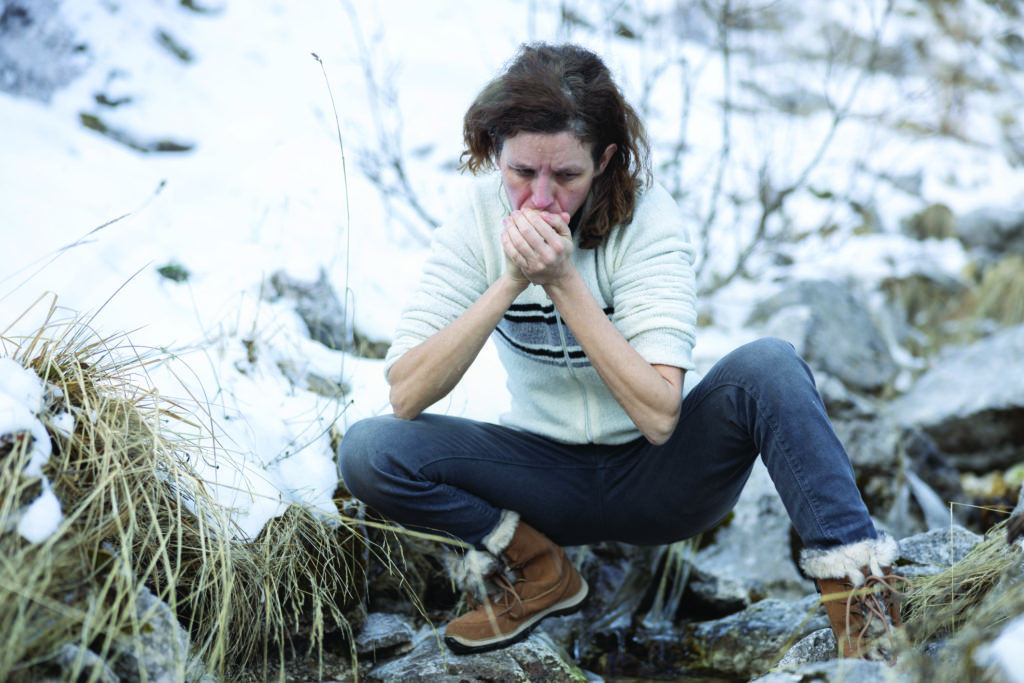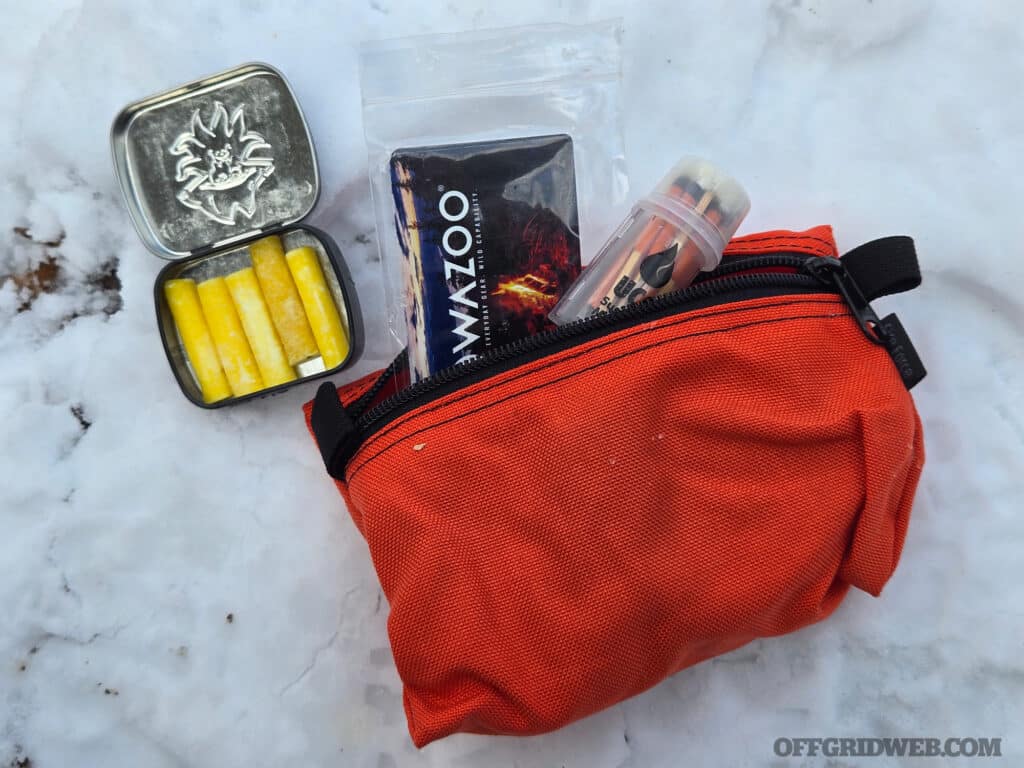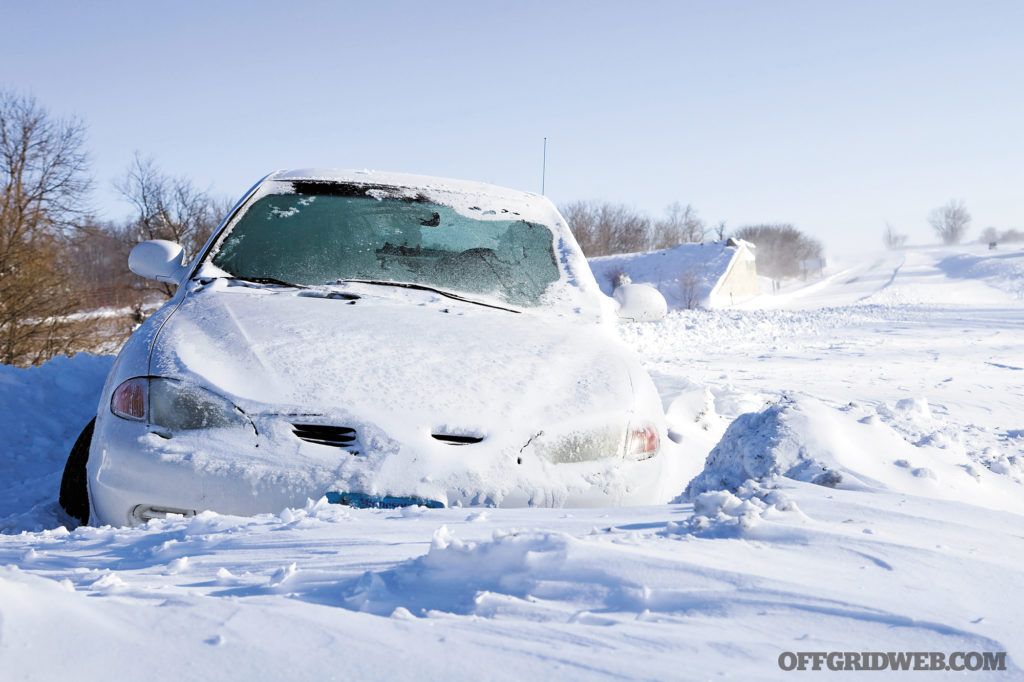The cold winter months bring about some serious issues for outdoor enthusiasts and those who may inadvertently go stuck outside for an extended period of time. Snow, wind, and freezing temperatures can make the terrain more difficult to navigate and make roads dangerous. Beyond the terrain challenges one of the biggest threats to our health and safety in the winter months is hypothermia. Understanding the basics of how hypothermia can occur, what can be done to prevent it, and how to treat someone in a hypothermic state can go a long way to helping us healthy and prepared in the cold seasons!
What is Hypothermia?
Hypothermia is caused by a drop in core body temperature below 95 degrees Fahrenheit. Hypothermia impacts a number of essential systems in our bodies including our cardiovascular nervous, and respiratory systems. If left untreated hypothermia can lead to a total failure of one or all of these systems resulting in death. Even if hypothermia is treated in severe cases long-term damage to the body is possible from a reduction of blood flow. This is most common in arms, legs, hands, and feet.
How Hypothermia Occurs
Hypothermia occurs when our bodies lose heat faster than it can produce heat. Most of the body’s heat loss will occur through the skin, 90% of heat loss occurs through your skin. The other 10% of the body’s heat loss occurs through the respiration (breathing) process.
Hypothermia is commonly caused by extended exposure to cold temperatures or being submerged in cold water. While this most commonly occurs in the winter months, it is possible to become hypothermic in warmer conditions. In spring the air temperature is warm, but water can still be very cold, extended submersion in recently thawed water can easily trigger hypothermia. Wind exposure also increases the risk of hypothermia, as the wind will displace the thin layer of warm air that surrounds our skin.
Young children and the older adults are more susceptible to hypothermia than other groups. While hypothermia is most common in temperatures below 40 degrees Fahrenheit, it is possible that long-term exposure of 60 degrees or less can lead to hypothermia in these more sensitive groups.
Signs and Symptoms of Hypothermia
- Shivering uncontrollably in the early stages
- Slow, shallow breathing
- Feeling of being drowsy or exhausted
- Slurred Speech
- Loss of coordination and motor function
- Slow and/or weak pulse
- In severe cases loss of consciousness and very little signs of breathing or pulse
Hypothermia isn’t only a concern in cold weather. A moisture-wicking base layer will keep your skin dry, reducing your risk of this condition.
Preventing Hypothermia: Avoiding Extreme Cold
Preventing hypothermia is far better than having to treat hypothermia. There are a number of steps we can take to prevent our bodies from going into a hypothermic state.
Let’s face it, even if you love the great outdoors there are times we should avoid it. During periods of extreme cold and wind, it is in our best interest to avoid prolonged exposure. The misconception that people often have is that if there is no snow, they will be safe outdoors in the winter. This is unfortunately a life-threatening misconception. It is also important to remember that the wind has a large impact on how fast our body cools and loses heat.
Preventing Hypothermia: Proper Clothing and Layering
If you can’t avoid the cold, ensuring we have the appropriate clothing and outerwear is very important. Creating layers that will help insulate our body is vital for any long-term cold exposure.
Base Layer: base layers typically go beneath your other clothing, while there are many material options sold I only recommend a wool base layer. Wool is a natural material that animals use to help regulate their body temperature. Unlike cotton wool retains the ability to keep you warm when wet, and unlike synthetic materials, wool is naturally fire-resistant. For my base layer, I use Merino wool from head to toe. Wool socks are especially important as they will keep your feet warm and reduce the absorption of sweat and help prevent damage to your foot tissue.
Mid Layer: This layer consists of your regular clothes, pants, shirt, etc. Again avoiding standard cotton is a good idea, especially if you may get wet or plan on being very active and generating sweat. Materials that can absorb water from rain of melting snow will diminish our ability to stay warm, especially if we are facing declining temperatures throughout the day. Water resistant or waterproof pants can help prevent the loss of body heat.
Keeping your core warm is vital. Your heart will be pumping blood from your core through your body and cooler blood will be returning from your extremities. In extreme temperatures including a fleece or insulated vest will go a long way to keeping your core warm..
Outer Layer: This consists of your coat, hat, gloves, and shoe/boot. It is important that you get the appropriate outer layers, as most “fashion” hats, gloves, and coats will do very little to protect you from the elements. An insulated coat or parka is the way to go, and I highly recommend you have one that is waterproof in the case of snow or rain. Wool beanies and gloves can serve as a good outer layer for your head and hands or be placed under a thicker hat and glove. For your feet, a solid boot hiking boot that is waterproof is beneficial because the waterproofing often serves as insulation. For long-term extreme cold situations, insulated boots are a good choice.
Synthetic Fire starters such as the Black Beard Fire Plugs and Wazoo Fire Cards can produce a hot flame even when wet.
Preventing Hypothermia: Build a Fire
Fire provides warmth, light, and so much more; having the ability to build a fire, especially one large enough to produce enough warmth to heat your body is very important. Wet conditions and high winds may make this task difficult.
I always recommend keeping some water-resistant fire-starting material in your survival kits. With some practice, you can get a fire started with these tinder sources even in adverse conditions.
Tips for Treatment for Hypothermia
Even with all of our efforts to prevent hypothermia from occurring it is still very possible to succumb to it, or encounter someone else who is in a hypothermic state. These guidelines can help in an emergency situation, but it is still important to contact emergency medical professionals in the case that you or someone else is in a hypothermic state.
- If possible, bring the person indoors, if not do your best to insulate them from the cold ground.
- Remove any wet clothing and replace it with warm dry clothing if possible.
- Rewarm the person focusing on their core using extra clothing and blankets.
- Do not warm extremities first (arms and legs) as this can cause arrhythmia (irregular heartbeat)
- Do not put in a warm shower or bath as this can cause arrhythmia.
- If conscious offer warm fluids, without caffeine or alcohol as they can speed heat loss.
- If the person is unconscious begin CPR and contact emergency medical personnel immediately.
Cold Weather Vehicle Considerations
People often mistakenly view their vehicles as a potential shelter from the extreme cold. If the vehicle is not running its does not produce heat and will quickly become very cold inside. While this may shelter you from the wind, it will, at best delay hypothermia. What vehicles do provide us is the ability to store some essential supplies.
- Blankets: Keeping blankets in your vehicle, especially wool blankets, can provide us a much-needed form of insulation in a cold weather emergency.
- Spare Clothing: Travel with a spare set of appropriate winter clothing. If the clothing you are wearing become wet, it hurt us more than they help us and can lead to hypothermia. That spare set of warm and dry clothing can potentially save your life.
- Survival Kit: Having a survival kit, especially one that provides a means of making fire and the tools you may need to build a makeshift shelter is very valuable in an extreme cold survival situation.
- Fuel: It is important to ensure your vehicle has as close to a full tank of gas as possible during the cold months as the ability to keep your heat running as long as possible is vital in an emergency.
- Maintenance: Just as the winter is hard on our bodies, it is also hard on our vehicles. Making sure maintenance is up to date will help prevent unexpected vehicle breakdowns in extreme cold conditions.
Sources
Read More
Don’t miss essential survival insights—sign up for Recoil Offgrid’s free newsletter today!
- Go Bag: Building a Winter Survival Kit with BCO Discovery M1
- Winter Wheels: Preparing Your Vehicle for Cold Weather
- Snow Worries: 7 Survival Tips for Hiking in Winter
- Corvus Survival: Winter Survival Training
- What If: Your State Is Hit With A Deep Freeze?
Check out our other publications on the web: Recoil | Gun Digest | Blade | RecoilTV | RECOILtv (YouTube)
The post Hypothermia: Keeping Safe in Winter Weather appeared first on RECOIL OFFGRID.


